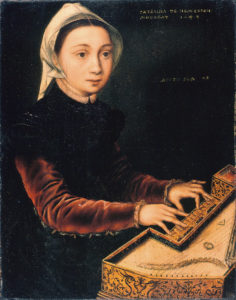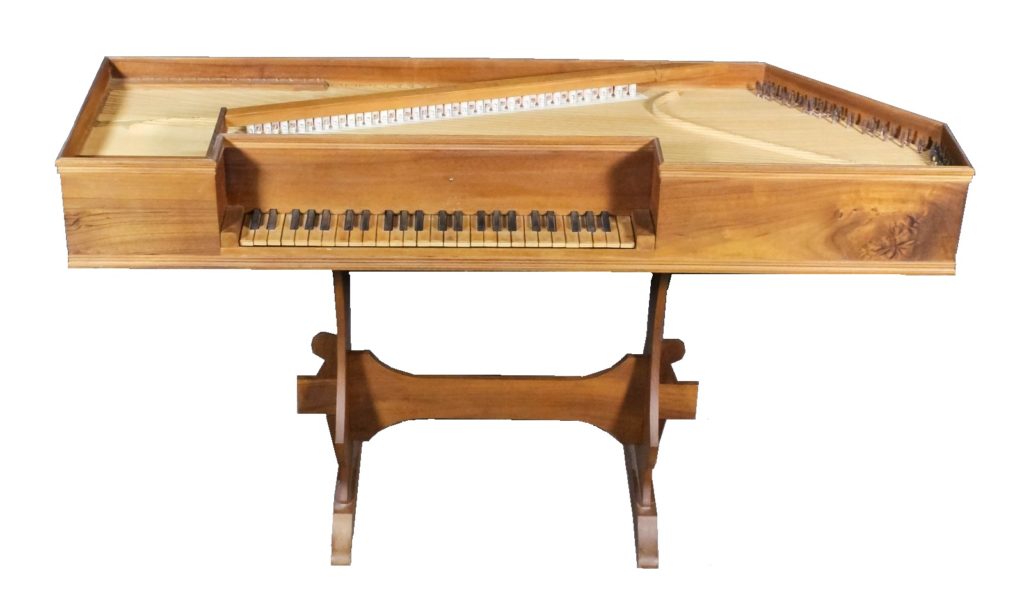Startseite » Instrumente » Virginal nach Vitus de Trasuntino ca. 1990
Virginal after Vitus de Trasuntino c. 1990
Description
Virginals were mostly used from the 16th to the 18th century, especially in Italy, England and the Netherlands and enjoyed great popularity. There are early paintings of women at the virginal. One of the earliest portraits is of Catharina van Hemessen (1527/28 – 1583) at a virginal. The portrait is now in the Wallraf-Richartz Museum in Cologne.

Catharina van Hemesser 1548 – Wallraf-Richartz Museum Köln
Virginals are much smaller than harpsichords. The strings run parallel to the keyboard and are pucked by a jack.
The Virginal in the Eric Feller Collection was made by Heugel after original instruments. It is constructed on the basis of instruments made by Vitus de Trasuntino (Venice).
The case is made of walnut with a circumferential profile edge. The soundboard is made of spruce wood and has two bridges. The instrument uses plastic jacks with Delrin quills. The keyboard is made of pear wood and the case rests on a renaissance-style stand. On the left side next to the keyboard is a small box with lid.
The sound is very warm and has a variety of timbres. These timbres arise due to the design. Virginals have two bridges that rest on the soundboard. Due to the small dimensions it can be used very well for solo and chamber music.
|
Circumference:
|
4 octaves (CC – c3) |
|
Mechanics:
|
Plastic jacks with delrin plectrums |



